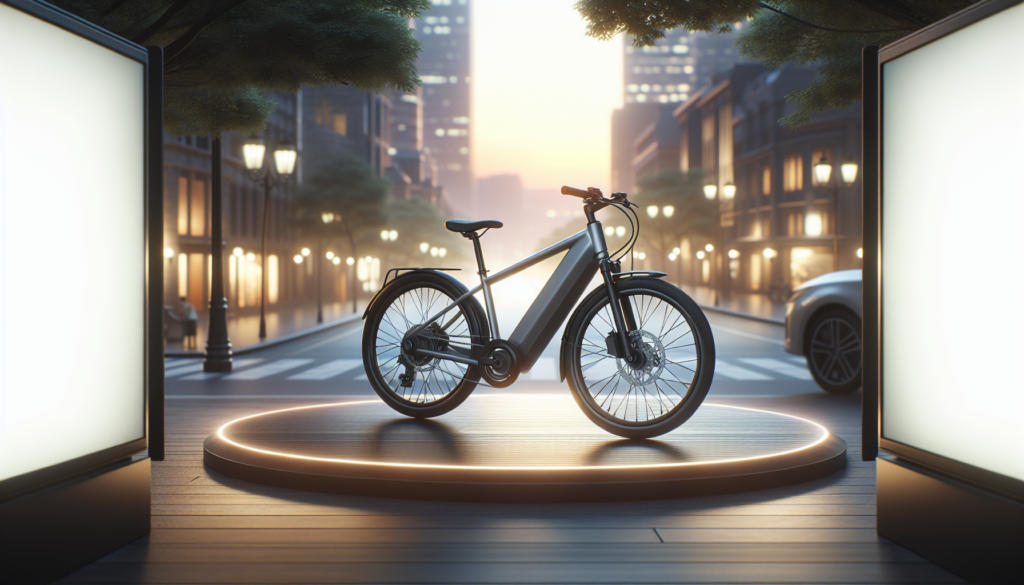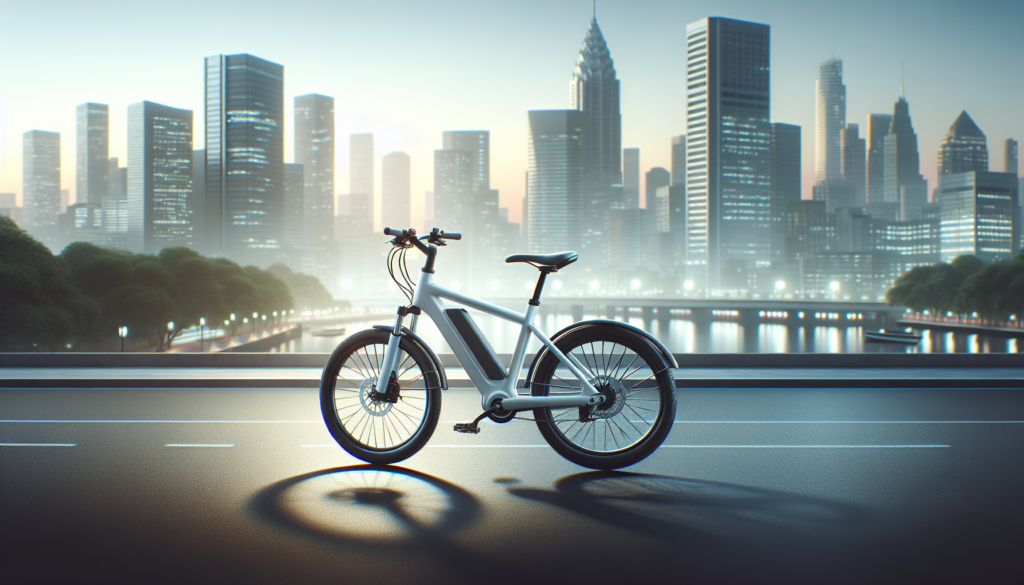
When it comes to electric bikes, the Xiaomi Himo Z20 and Xiaomi C20 ebike models offer a wealth of features and specs that can be particularly enticing for potential buyers. Both ebikes share nearly identical specifications, yet they differ in frame design, with the Z20 boasting a foldable frame for enhanced portability, while the Xiaomi C20 ebike features a full-frame construction.
Despite their similarities, many enthusiasts are left questioning whether these bikes provide the best value for money, especially when compared to competitors like the ADO A20 Lite, which offers a unique set of benefits. In this blog post, we’ll dive deep into the intricacies of the Xiaomi Himo Z20 and Xiaomi C20 ebikes, evaluating their performance and design to help you make an informed decision on which model is right for you.
Overview of Xiaomi Himo Z20 and Xiaomi C20 ebike Specifications
When thrown into the ring against the ADO A20 Lite from EKO Life MY, a compelling alternative emerges. The ADO A20 Lite boasts a lighter weight of 16 kg and an impressive hydraulic braking system, along with three electrical assist modes for enhanced rider customization. Its 36V 9.6Ah battery may provide a comparable range, but at a price of RM 3,699, it falls into a different price bracket than the RM 3,099 Himo Z20.
While the Z20 and C20 offer great features for their price, the ADO A20 Lite‘s capabilities provide a strong argument for those seeking superior performance without breaking the bank. This overview of the specifications illustrates that while both Xiaomi models have their merits, the ADO A20 Lite holds a competitive edge.
Design Differences: Foldable vs. Full Frame
When comparing the Xiaomi Himo Z20 and Xiaomi C20 ebikes, one of the most noticeable design differences lies in their frames. The Himo Z20 distinguishes itself with a foldable frame, making it an excellent option for those who seek convenience and portability. This feature allows riders to easily store the bike in compact spaces or carry it on public transport without significant hassle. The ability to fold the Z20 not only adds practicality but also makes it ideal for city dwellers or commuters who may have limited storage options.
On the other hand, the Xiaomi C20 ebike features a robust full frame which enhances its structural integrity and delivers a more stable ride, particularly on rough terrains or longer journeys. This stability may appeal to cyclists who prioritize ride quality and durability over portability. Despite these differences in frame design, both bikes boast similar specifications, including a 36V lithium-ion battery providing a range of about 60km, a maximum load capacity of 100kg, and comparable pricing.
However, when considering value for money, many users find the ADO A20 Lite ebike compelling due to its superior features such as refined electrical assist modes and hydraulic brakes. While both the Z20 and C20 are certainly capable bikes, it’s essential to weigh the design advantages against the overall performance and value offered by the ADO A20 Lite before making a decision.
Performance Comparison: Speed and Range

When comparing the performance of the Xiaomi Himo Z20 and the Xiaomi C20 ebikes, it’s important to note that both models are equipped with similar specifications, ensuring that users can expect comparable speed and range. The Himo Z20 features a dual electrical assist mode that allows riders to switch between Dynamic Sports Mode and Cool Mode, maximizing its versatility on various terrains.
With a 36V 10Ah Li-ion battery, the Z20 boasts an impressive range of approximately 60km, making it a practical choice for daily commutes or leisurely rides. Its mechanical disc brakes provide reliable stopping power, essential for safety during higher-speed rides. The maximum load capacity of 100kg further adds to its effectiveness as a dependable transport option, despite its slightly heavier weight of 21.6kg compared to the A20 Lite.
On the other hand, the ADO A20 Lite also offers a similar range of about 60km with its 36V 9.6Ah battery, but it distinguishes itself with three different electrical assist modes, catering to various riding preferences. Weighing only 16kg, it is notably lighter and utilizes a belt system paired with hydraulic brakes, providing enhanced performance and a smoother ride. Given these contrasts, while the Xiaomi Himo Z20 and Xiaomi C20 ebike may deliver similar performance, the ADO A20 Lite stands out with its advanced features and lighter frame, providing more value for the price, especially for those seeking a balance of speed, performance, and transportability.
Electrical Assist Modes: Understanding the Options
When comparing the Xiaomi Himo Z20 and Xiaomi C20 ebikes, one of the standout features is their electrical assist modes. The Z20 offers a dual electrical assist mode, allowing riders to choose between Dynamic Sports Mode, which provides a burst of power for a more vigorous ride, or Cool Mode for a more relaxed pace. This flexibility makes the Z20 suitable for varied riding styles and terrains, catering to those who want an engaging experience. In contrast, the Xiaomi C20 ebike typically shares similar specifications, but it is important to note that both models have been designed with efficiency in mind, making an enjoyable ride accessible for many riders alike.
On the other hand, the ADO A20 Lite ebike, despite its slightly higher price, provides three electrical assist modes, which makes it more versatile in adapting to different riding scenarios. This distinction could be key for potential buyers who value varying levels of assistance for different occasions. Given that both the Xiaomi designs feature a robust 36V battery with a similar range of about 60 km, the decision may come down to the subtle differences in the riding experience provided by each model. Therefore, whether you choose the foldable Z20 or the full-frame C20, understanding the assist modes is essential in making an informed decision for your desired riding lifestyle.
Weight and Portability: Which Ebike is Easier to Handle?

When it comes to weight and portability, the Xiaomi Himo Z20 and Xiaomi C20 ebikes have intriguing differences that cater to varied user preferences. The Z20, with its foldable frame, weighs 21.6kg, which is relatively manageable for most users who seek to store their ebike in compact spaces or transport it on public transport. The ability to fold the Z20 offers unmatched convenience, making it ideal for commuters who need to combine cycling with bus or train travel. On the other hand, the Xiaomi C20 ebike boasts a full frame design and a weight similar to Z20, allowing for durability but sacrificing the compactness and ease of storage that many might find appealing.
Even though both models can accommodate a maximum load of 100kg, the portability aspect distinctly tilts in favor of the Z20 due to its design flexibility. In the realm of ease of handling, the ADO A20 Lite significantly stands out due to its lightweight construction of just 16kg. Its belt system contributes to a smoother ride, making it easier to maneuver compared to the mechanical disc of the Z20 and C20. Additionally, the hydraulic brakes of the A20 Lite enhance its stopping power, ensuring better safety and control while riding. While both Xiaomi models provide great features, for those prioritizing weight and portability, especially for urban commuting, the ADO A20 Lite offers a more user-friendly experience overall.
Price Analysis: Is the ADO A20 Lite a Better Value?
When it comes to price analysis, the ADO A20 Lite stands out as a more attractive option compared to the Xiaomi Himo Z20 and Xiaomi C20 ebikes. The Himo Z20, priced at RM 3,099, offers features like a dual electrical assist mode, mechanical disc brakes, and a foldable frame. On the other hand, the Z20’s counterpart, the Xiaomi C20 ebike, is slightly more expensive at RM 3,699 while providing similar specifications in a full-frame design.
Both models come equipped with a 36V Li-ion battery, ensuring a range of about 60km and handling a maximum load of 100kg. However, when assessing the added cost, one may question whether the additional features justify the higher price tag, especially when looking for value for money in the rapidly growing ebike market.
In contrast, the ADO A20 Lite presents itself as a more economical choice at RM 3,699 while delivering superior features such as a lightweight 16kg frame, hydraulic brakes, and three electrical assist modes. Despite both the Himo Z20 and Xiaomi C20 ebike offering solid performance, the ADO A20 Lite’s advanced features combined with its weight advantage and hydraulic braking system make it a compelling alternative for those in search of optimal value. For riders who prioritize efficiency and an enhanced riding experience without breaking the bank, the ADO A20 Lite emerges as a worthy contender against the Xiaomi C20 ebike and its foldable sibling, the Himo Z20.
User Experience: Comfort and Ride Quality
When it comes to user experience, the comfort and ride quality of both the Xiaomi Himo Z20 and Xiaomi C20 ebikes stand out. The Himo Z20 features a foldable frame, which not only enhances portability but also makes it convenient for urban riders who may need to store their bike in tighter spaces. Its dual electrical assist modes—Dynamic Sports Mode and Cool Mode—allow riders to choose the level of exertion that matches their needs.
Weighing in at 21.6kg and equipped with a mechanical disc brake system, this bike strikes a balance between stability and maneuverability, ensuring a pleasant ride even on varied terrains. The 36V 10Ah Li-ion battery provides a robust range of about 60km, ensuring that users can rely on it for daily commutes without worrying about running out of power too soon.
In contrast, the Xiaomi C20 ebike, with its full frame design, offers a slightly different riding experience. While it shares similar specifications, including the 36V battery and maximum load capacity of 100kg, the C20’s design caters to those who prefer a more traditional bike form. Moreover, the C20’s hydraulic brake system enhances stopping power, greatly contributing to ride confidence. However, comparing both to the ADO A20 Lite, it’s evident that the latter, with its lighter weight and competitive price, offers enhanced usability and comfort for the price-conscious consumer, making it a commendable alternative for anyone looking for the best value for their money.
Final Thoughts on Choosing Between Z20, C20, and ADO A20 Lite
Choosing between the Xiaomi Himo Z20, Xiaomi C20 ebike, and ADO A20 Lite ultimately comes down to personal preferences and requirements. The Z20 offers a foldable frame that makes it ideal for urban riders who may need to store their bike in tight spaces or transport it on public transit. With its dual electrical assist modes, a robust 36V 10Ah battery and range of about 60km, the Z20 is a solid choice for versatile commuting.
In contrast, the Xiaomi C20 ebike, with the same specifications but a full frame design, provides a stable and sturdy ride but lacks the portability of the Z20. Both bikes can carry a maximum load of 100kg, making them suitable for daily use, yet they are priced similarly, which raises questions about their value in comparison to alternatives. On the other hand, the ADO A20 Lite stands out with its lighter weight of 16kg, a hydraulic brake system, and three electrical assist modes. This e-bike offers a comparable range of 60km thanks to its 36V 9.6Ah battery, and while it’s priced slightly higher at RM 3,699, it may provide greater performance and value due to its advanced braking technology.
In summary, if compactness and portability are paramount, the Xiaomi Himo Z20 is a clear choice, while those seeking robust build quality without the need for folding might lean towards the Xiaomi C20 ebike. For an overall enhanced riding experience, the ADO A20 Lite deserves consideration for its features and lightweight design.
Final Thoughts: Choosing the Right Ebike for Your Needs

In summary, both the Xiaomi Himo Z20 and Xiaomi C20 ebikes offer similar specifications, making either a solid choice for urban commuting or leisurely rides. However, their distinct frame styles—the foldable Z20 versus the full-frame C20—cater to different preferences and circumstances. If portability is a critical factor for you, the foldable design of the Z20 is undoubtedly advantageous, allowing for easier storage and transport. On the other hand, if you prefer a more traditional look and feel, you might lean towards the C20.
Ultimately, your choice will depend on your lifestyle and how you intend to use the bike. Nonetheless, while both the Z20 and C20 have their merits, it’s essential to consider the ADO A20 Lite as a formidable alternative. With its lighter weight, reliable hydraulic brakes, and slightly more affordable price point, the A20 Lite provides excellent value for money. If range and weight are your main concerns, and you’re looking for an ebike that combines these features with good performance, the A20 Lite might be the more suitable option for you. Whichever decision you make, ensure that it aligns with your specific riding needs and preferences.

A summary should give readers a clear direction of what to expect, but unfortunately, this one falls short.
Thank you for sharing your thoughts on our blog summary. We appreciate your feedback and would like to know more about what you were expecting from our summary. Please feel free to contact us at [email protected] or call us at +60 3-7890 3042 so we can better understand your needs.
It would be great if the writer could elaborate more on the key points and provide examples for better understanding.
Hello Farhan Aiyaz, thank you for taking the time to read our blog post and for your valuable feedback. We appreciate your suggestion and will definitely consider elaborating on key points with examples in our future posts. In fact, we’ve received similar feedback from many of our readers and will make sure to improve the content for better understanding. If you have any more specific ideas on what you would like to see, please feel free to reach out to us at [email protected] or call us at +60 3-7890 3042. We value your input and hope to see you in our community soon.
I’m quite disappointed because the blog summary is too brief and doesn’t give us an idea of what the article is about.
Hello Siti Fatimah Wong, we apologize for any disappointment caused. Our team will review the blog summary and ensure it provides a clear overview of the article for better understanding of our readers. Thank you for taking the time to share your feedback. If you have any further suggestions or questions, please don’t hesitate to reach out to us at [email protected] or call us at +60 3-7890 3042.